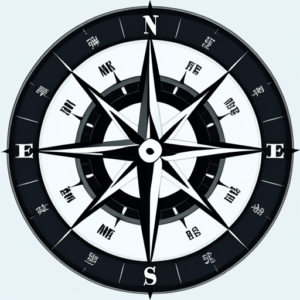I once worked for a company that had a developed set of Core Values that were visible around the offices, on their website, and that they’d roll out at conferences front and center. Members of the executive team waved Scaling Up around during all hands’ meetings like a corner preacher waives a Bible. They held morning stand ups and went through the motions of a number of the Rockefeller habits. But there was a problem. The same leaders waving Scaling Up in the air were instead waiving their Core Values. And the rank and file knew it.
Successful leadership in business hinges on leadership’s unwavering commitment to the organization’s Core Values and Higher Purpose. These fundamental and foundational principles serve as an organization’s compass, guiding its direction and actions. And when leadership doesn’t follow the same rules as they expect from the rank and file, cracks form.
Core Values: The Bedrock of Decision-Making
At the heart of any organization lie its Core Values, the deeply ingrained principles that form the foundation of its culture. They are integral in shaping behavior, guiding decision making, and providing a sense of identity. And these Core Values exist, whether or not an organization has been deliberate in discovering and articulating them.
When leaders articulate and exemplify (through their behaviors) these Core Values, they set the tone for ethical conduct and inspire others in the organization to do the same. When there is an unspoken set of rules that contradict the Core Values, especially when that alternative set of rules is reserved only for a chosen few, an organization is doomed to struggle or fail.
The discovery, articulation, and assertion of an organization’s Core Values isn’t merely a matter of public relations. It isn’t window dressing. The true measure of these values lies not in their proclamation, but in their practice. It’s about consistency of action, the day-in, day-out commitment to these principles, even when the going gets tough, especially on the part of the leaders.
Higher Purpose: The North Star
The same holds true for your Higher Purpose. While Core Values define the ‘how’ of an organization’s journey, the Higher Purpose defines the ‘why’. This overarching vision, this reason for being, serves as a beacon, aligning the organization’s strategies and objectives and driving its growth.
When you steadfastly adhere to your organization’s Higher Purpose, when you use it and bring it to life, you will infuse a sense of a shared cause throughout your teams. This shared cause supports a strong sense of purpose and inspires individuals to contribute their best towards achieving the organization’s goals.
Leadership remaining true to the Higher Purpose keeps it alive and inspires. When leaders abandon the Higher Purpose by making decisions and taking actions that deviate from or directly contradict the Higher Purpose, inspiration is lost, and cohesion undermined.
The Fidelity Imperative
Leadership implies power, the power to influence, inspire, persuade, and convince. And this power should never be misconstrued as an exemption from accountability. In reality, it is the opposite. True leaders understand that they are accountable, that their actions and decisions have far-reaching implications. They also understand that no one is above the law, and they ensure they operate within the boundaries they profess.
Fidelity is one’s faithfulness to obligations, duties, or observances. In this context, it goes beyond compliance. It’s about living the Core Values and Higher Purpose consistently, transparently, and with integrity. It’s about earning trust, not through words, but through actions that affirm the stated values and purpose. It’s about demonstrating, day in and day out, that the Core Values and Higher Purpose are not just words on a plaque, poster, or website, but the very ethos that guides every decision and action.
When leaders fail to uphold these principles, they compromise not only their personal integrity but also the trust of their teams and stakeholders. This breach has a domino effect of unsettling the organizational culture and tarnishing its reputation.
Staying the Course: The Leadership Challenge
The challenge for you is to stay the course, to first articulate, explicitly, what they are, and then to steadfastly uphold your organization’s Core Values and Higher Purpose. This requires not only your personal commitment and discipline but also your willingness to ensure these principles are brought to life and ingrained in your organization’s culture.
This is a continuous process. It requires repeatable processes that highlight and integrate your Core Values and Higher Purpose into your ongoing operations, as well as regular reflection and honest assessment. It calls for courageous decision-making, even when the path of integrity is less traveled, or rather especially so. Above all, it requires you to lead by example, demonstrating through your actions that you are true to your word, and no one, including the leaders, is above the law.
True leadership isn’t just about articulating Core Values and a Higher Purpose — it’s about embodying them. It’s about earning trust through consistent action and maintaining an unwavering commitment to integrity. For when you walk your talk, you inspire others to do the same, creating, fostering, and nurturing a culture of integrity that drives your organization forward.
Subscribe to the Newsletter on LinkedIn and get these in your mailbox every week.
